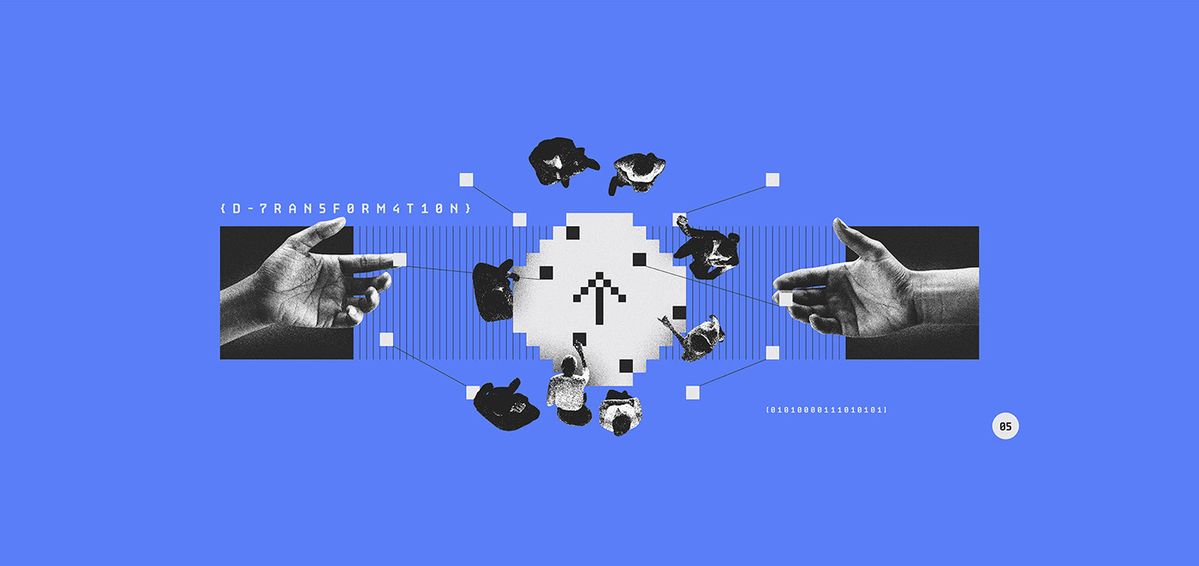Core Definition and Functionality
AI models fundamentally represent computer systems designed to perform tasks by recognizing patterns and making decisions with minimal human intervention. These sophisticated AI model computational frameworks serve as the backbone of artificial intelligence applications across industries today. By processing vast amounts of data, AI models can identify correlations, generate predictions, and even create new content based on learned patterns. Unlike traditional software that follows explicit programming instructions, AI models develop their own internal rules through exposure to examples and feedback. This learning capability allows AI models to tackle complex problems previously unsolvable through conventional algorithmic approaches.
Evolution and Importance
Furthermore, modern AI models continuously evolve as they encounter new information, making them increasingly valuable tools for businesses, researchers, and everyday users seeking automated solutions to challenging problems. The effectiveness of an AI model depends largely on its architecture, the quality of data it receives, and the methodology used during its training process. These elements work together to determine how well the model can generalize from its training experiences to perform reliably on new, unseen situations. Additionally, the computational resources required to develop and deploy AI models have decreased dramatically in recent years, democratizing access to this transformative technology across organizations of all sizes.
Types of AI Models

Supervised Learning Models
AI models come in various forms, each designed to excel at specific types of tasks. Supervised learning models learn from labeled data to make predictions or classifications. These include linear regression models for numerical predictions, decision trees that make sequential choices based on features, and support vector machines that find optimal boundaries between data classes.
Deep Learning Models
Deep learning models, structured as neural networks with multiple processing layers, represent another significant category. Convolutional Neural Networks (CNNs) excel at image recognition tasks by identifying spatial patterns, while Recurrent Neural Networks (RNNs) and their advanced variants like LSTMs and GRUs process sequential data such as text or time series by maintaining memory of previous inputs.
Unsupervised Learning Models
Unsupervised learning models discover patterns without labeled training data. Clustering algorithms group similar data points, while dimensionality reduction techniques like Principal Component Analysis compress data while preserving essential information. Autoencoders learn efficient data representations through self-supervised encoding and decoding.
Reinforcement Learning Models
Reinforcement learning models learn optimal behaviors through trial and error. These models interact with environments, receiving rewards or penalties based on their actions, gradually improving their decision-making strategies. This approach powers applications from game-playing AI to autonomous vehicles.
Transformer Models
Transformer models have revolutionized natural language processing with their attention mechanisms that weigh relationships between different parts of input data. Models like GPT (Generative Pre-trained Transformer) and BERT (Bidirectional Encoder Representations from Transformers) have achieved remarkable results in language understanding and generation tasks.
Hybrid Approaches
Hybrid models combine multiple approaches to leverage their respective strengths. For instance, neuro-symbolic systems integrate neural networks with symbolic reasoning to improve interpretability while maintaining powerful pattern recognition capabilities.
AI Model Architecture

Basic Structural Elements
The architecture of an AI model defines its structural organization and determines how information flows through the system. At its core, most modern AI architectures consist of interconnected processing units or neurons organized in layers. The input layer receives raw data, hidden layers perform transformative computations, and the output layer produces the final result.
Common Architectural Paradigms
Feed-forward architectures represent the simplest configuration, where information travels in one direction from input to output. These structures work well for straightforward classification and regression tasks but struggle with sequential or context-dependent problems. Convolutional architectures incorporate specialized layers that apply filters across input data, effectively identifying spatial hierarchies of features. This design proves particularly effective for computer vision applications where patterns exist across different regions.
Advanced Architectural Designs
Recurrent architectures introduce feedback connections, allowing information to persist between processing steps. This memory capability makes them suitable for sequential data processing in applications like language modeling, speech recognition, and time series analysis. Transformer architectures employ self-attention mechanisms to weigh the importance of different input elements relative to each other, capturing complex relationships regardless of positional distance.
Depth and Width Considerations
The depth of an architecture refers to its number of processing layers. Deeper models can learn more abstract representations but require more data and computational resources to train effectively. Width refers to the number of neurons per layer, affecting the model’s capacity to represent complex patterns at each processing stage.
Architectural Innovations
Architectural innovations continue to drive AI advancement. Skip connections in residual networks allow information to bypass certain layers, helping overcome training difficulties in very deep networks. Encoder-decoder structures separate the processes of understanding input and generating output, proving valuable for translation and summarization tasks. Generative architectures like GANs (Generative Adversarial Networks) consist of competing neural networks that collectively learn to produce new, realistic data samples.
Design Tradeoffs
Each architectural choice involves tradeoffs between computational efficiency, learning capacity, and suitability for specific problem domains. The optimal architecture depends on the nature of the task, available data, and deployment constraints.
Data Processing Pipeline

Forms of Input Data
The input/output framework forms the interface between AI models and the world, determining what information the model processes and what results it produces. Input data serves as the raw material that models transform into meaningful outputs through their internal computations. Inputs to AI models can take numerous forms depending on the application domain. For computer vision models, inputs typically consist of digital images or video frames represented as matrices of pixel values. Text-based models receive sequences of words, tokens, or characters, often transformed into numerical embeddings that capture semantic relationships. Audio inputs appear as waveforms or spectrograms representing sound frequencies over time. Structured data inputs organize information into tables with defined fields, while sensor data streams provide continuous measurements from physical devices.
Data Preprocessing Strategies
Before processing by AI models, raw inputs usually undergo preprocessing steps to standardize formats and highlight relevant features. These steps might include normalization to bring values within a consistent range, dimensionality reduction to focus on essential information, tokenization to break text into manageable units, and augmentation to artificially expand training datasets through controlled variations.
Output Categories and Functions
Outputs from AI models vary according to the task they perform. Classification models produce categorical labels or probability distributions across possible classes. Regression models generate numerical predictions for continuous variables. Generative models create entirely new content resembling their training data, whether images, text, or other media types. Sequence models output ordered series of elements, while reinforcement learning models produce action recommendations for different scenarios.
Input-Output Relationships
The relationship between inputs and outputs defines the model’s function. In discriminative models, this relationship focuses on boundaries between categories. In generative models, it captures the underlying distribution of the data itself. The fidelity of this input-output mapping directly impacts model utility and reliability in real-world applications.
Output Interpretation and Post-processing
Interpreting model outputs often requires post-processing steps to translate internal representations into user-friendly formats. This might involve converting probability scores into binary decisions, transforming encoded representations back into human-readable content, or scaling numerical outputs to meaningful ranges for the application domain.
Training Flow

Data Preparation and Organization
The training flow represents the systematic process through which AI models develop their capabilities. This journey transforms an initially randomized system into a specialized tool for solving specific problems through careful data exposure and parameter adjustment. Training begins with data preparation, where relevant information is collected, cleaned, and structured appropriately for the model. This crucial step involves handling missing values, removing outliers, normalizing features, and splitting data into training, validation, and testing sets. The quality and representativeness of this data fundamentally determines the model’s ultimate performance boundaries.
Model Initialization Techniques
Model initialization establishes starting values for all parameters before training begins. Modern techniques use carefully designed initialization strategies to promote stable and efficient learning rather than purely random values. These initial configurations create favorable conditions for the optimization process that follows.
Forward and Backward Propagation
During forward propagation, the model processes training examples through its current parameter configuration, producing outputs that initially deviate significantly from desired results. Loss calculation quantifies these errors using mathematical functions designed for specific problem types. Common loss functions include mean squared error for regression tasks and cross-entropy loss for classification problems. Backward propagation, or backpropagation, calculates how each model parameter contributed to the observed errors. This process leverages calculus to determine gradients that indicate both the direction and magnitude of beneficial parameter adjustments.
Optimization Algorithms
Optimization algorithms like stochastic gradient descent, Adam, or RMSprop then apply these adjustments, systematically moving parameters toward configurations that reduce errors on training data. This cycle repeats iteratively, with each training epoch exposing the model to numerous examples. Throughout this process, hyperparameter tuning adjusts higher-level model configurations like learning rates, regularization strengths, and architectural details to improve performance. Regular evaluation on validation data prevents overfitting and guides these adjustments.
Advanced Training Methodologies
Advanced training workflows incorporate techniques like transfer learning, where models leverage knowledge from related tasks; curriculum learning, which introduces concepts in order of increasing complexity; and distributed training across multiple computational resources for greater efficiency. Monitoring metrics throughout training provides visibility into the model’s developmental trajectory and helps identify potential issues early.
Training Completion and Evaluation
Training concludes when performance stabilizes or computational budgets expire. The resulting model undergoes final evaluation on previously unseen test data to assess its generalization capabilities before deployment.
FAQs:
1. What’s the difference between AI, machine learning, and deep learning models? AI encompasses all computer systems designed to mimic human intelligence. Machine learning represents a subset of AI focusing on algorithms that improve through experience. Deep learning forms a specialized subset of machine learning using neural networks with multiple layers. These relationships nest within each other, with deep learning models representing the most sophisticated current approach to AI development.
2. How much data is typically needed to train an effective AI model? Data requirements vary dramatically based on model complexity and task difficulty. Simple classification models might perform adequately with hundreds of examples, while state-of-the-art deep learning systems often require millions of data points. Transfer learning can reduce these requirements by leveraging knowledge from pre-trained models. Generally, more complex relationships require larger datasets to learn effectively.
3. What computational resources are necessary for AI model training? Resource requirements scale with model size and data volume. Small models can train on standard laptops, while cutting-edge systems demand specialized hardware accelerators like GPUs or TPUs, sometimes configured in large clusters. Memory requirements depend on batch sizes and model architecture. Cloud computing platforms have made these resources more accessible through on-demand provisioning.
4. How do AI models handle uncertainty in their predictions? Modern AI models quantify uncertainty through probability distributions rather than single answers. Bayesian approaches explicitly model uncertainty in parameters, while ensemble methods combine multiple models to generate prediction ranges. Calibration techniques ensure these probability estimates accurately reflect actual confidence levels. Properly quantified uncertainty helps users make informed decisions based on model outputs.
5. Can AI models explain their decision-making process? Explainability varies significantly between model types. Decision trees provide naturally interpretable logic, while deep neural networks operate as complex “black boxes.” Techniques like LIME, SHAP, attention visualization, and feature importance analysis help illuminate neural network decision processes. Regulatory requirements increasingly demand explainable AI for high-stakes applications in healthcare, finance, and legal domains.
Stay updated with our latest articles on fxis.ai

